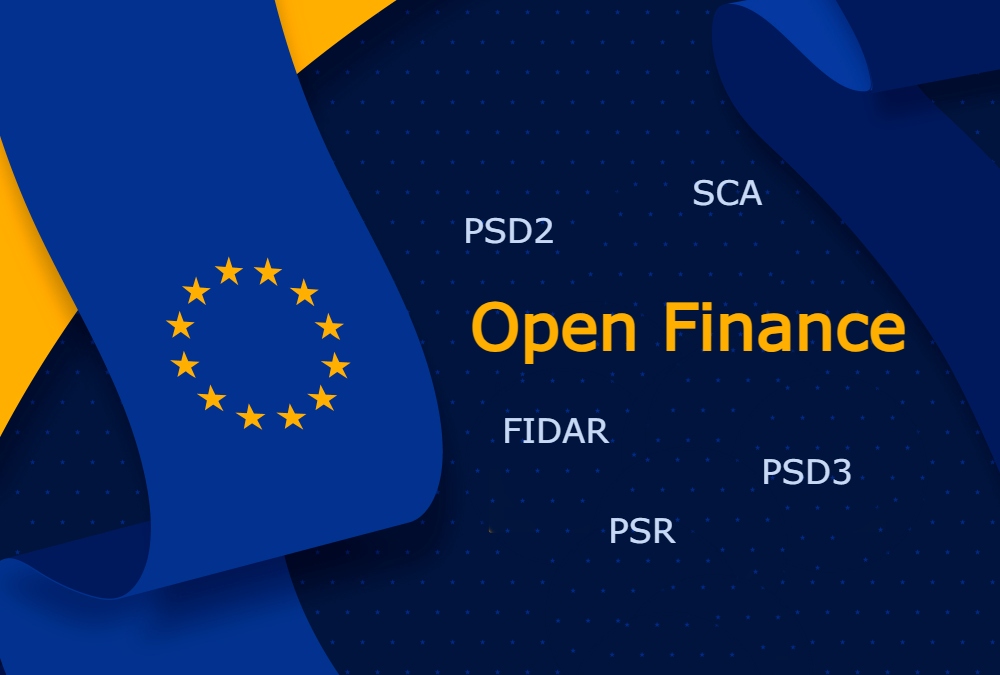Open Finance in the EU

Taking the frameworks of open banking, open finance seeks to harness the power of data sharing and collaboration between institutions to transcend the world of banking. With the arrival of PSD3, true financial openness has never been closer.
When fully liberated, open finance has the power to optimize a greater range of financial products and can deliver significant improvements to services like Wealth Management and Family Office.
The core principle of this enhancement is to establish an interconnected ecosystem that empowers customers to freely manage who can access their financial data and ensure healthy competition and innovation to help continue making strides in digital transformation within the finance industry.
Naturally, the growth of open finance in the European Union (EU) has been influenced by the ever-evolving regulatory framework surrounding the sector. The EU’s Payment Services Directive (PSD) sought to establish a groundwork for unified.
The launch of PSD2 grew the directive to accommodate a growing network of new payment services emphasizing consumer protection. This saw the advent of new rules like Strong Customer Authentication (SCA) to offer greater levels of security for user data.
On the 28th of June 2023, The European Commission released a draft for an open finance regulation that would expand the current PSD2 regulation where only checking account data is shared with a wider range of financial products like credit, investments, and insurance.
But to explore the impact of this new regulation and its implications for open finance, let’s take a deeper look at the principles of open finance, and how a prospective Payment Services Directive 3 (PSD3) can improve financial infrastructure in Europe.
What is Open Finance?
Before we look at the European Union’s regulatory framework for open finance, let’s explore what the term means.
In a nutshell, open finance refers to the continuation of open banking initiatives to deliver wider access to customers’ financial data. These initiatives can include access to services such as investing, pensions, savings, borrowing, accounting, and much more.
This will mean that customers’ financial data could be shared securely between banks and other financial institutions or fintech companies as well as the account holder’s consent.
Because of the security implications of sharing data across providers, a conducive regulatory environment must be in place to provide data protection while allowing the open finance ecosystem to grow.
The Value of Open Finance Data
Open finance thrives through the secure sharing of financial data across trusted third parties. This access makes it possible for institutions to offer more focused products and digital services that can be personally adapted and tailored to suit the needs of individual customers.
Specifically, investment transactions, insurance coverage, policy information, savings portfolio insights, and pension data can all be utilized for the benefit of shaping open finance services and the customer experience as a whole.
However, the danger of this information falling into the wrong hands can be extremely damaging for users of fintech applications and open banking services.
In the age of the General Data Protection Regulation (GDPR), matters of privacy in Europe have come into the spotlight. The upcoming PSD3 ecosystem will seek to bring the finance sector in line with online security.
How PSD3 Will Impact Open Finance Regulation
Without any clear frameworks in place to control the growth of open finance, the European Commission moved to update its PSD2 directive to ensure the EU’s financial sector maintains a commitment to protecting users of open finance.
The framework seeks to establish clear rights and obligations when it comes to managing customer data sharing within the financial sector beyond existing open banking functions such as online payments. Key considerations include:
- The possibility of, but no obligations, for customers to share their data with data users
- The obligation for customer data holders to make this data available to users
- The full control by customers regarding who can access their data and for what purpose
- The standardization of customer data and required technical interfaces
This package offers essential amendments to modernize the payment services regime to establish a more comprehensive Payment Services Regulation (PSR).
Addressing the Shortcomings of PSD2
There’s little doubt that PSD2 was successful in increasing the efficiency, transparency, and payment options for customers throughout Europe. However, the European Commission (EC) notes that the framework certainly wasn’t perfect, and as technology progressed, shortcomings were becoming exposed.
The proposals for Payment Services Directive 3 (PSD3) and Payment Services Regulation (PSR) will seek to address the shortcomings of PSD2.
The Evolution, not Revolution, of Digital Finance
Speaking on the impact of PSD3 and PSR on the European payments sector, Eric Ducoulombier, Head of Unit, Retail and Payments (DG FISMA), European Commission (EC), stated that “these proposals are an evolution, not a revolution.”
While highlighting that PSD2 largely met its intended objectives, important provisions were required to ensure that the financial data of customers remained safe in Europe.
“We propose to merge the payment and the e-money frameworks into one, even if some key e-money specificities are preserved,” Ducoulombier explained.




